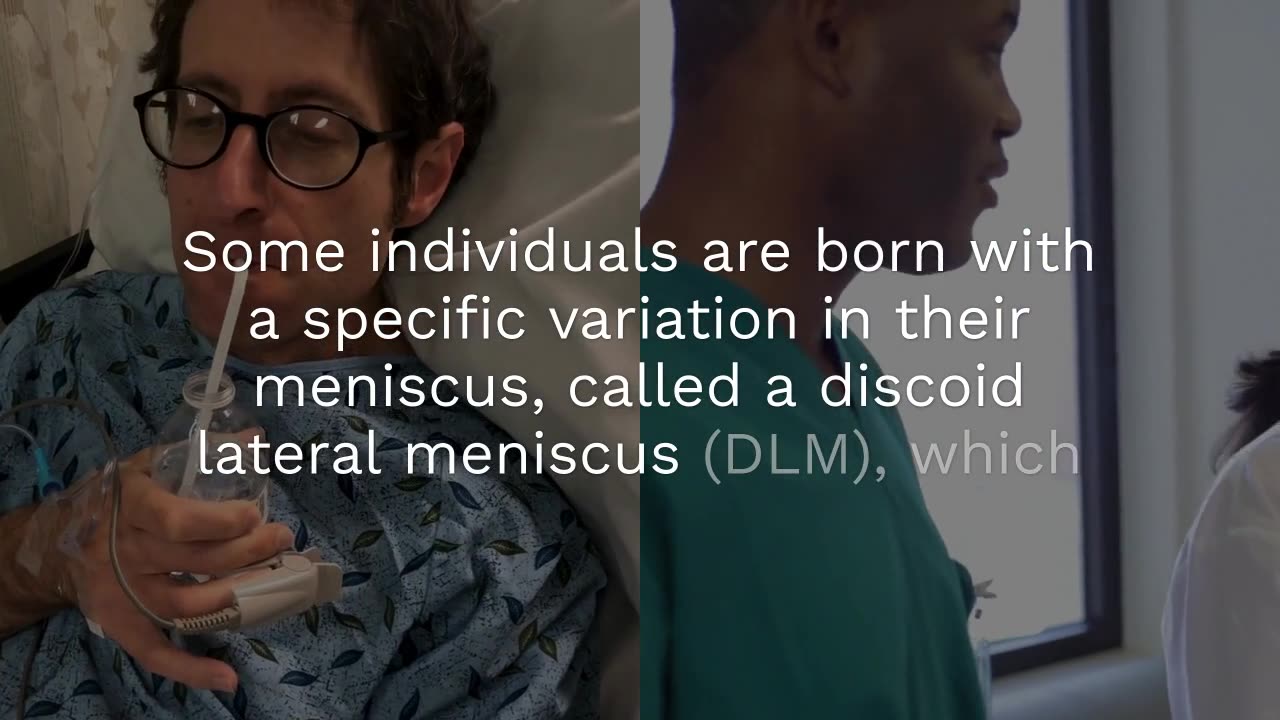Premium Only Content

Unraveling the Mystery of Knee Pain: Why Do Some Joint Deformities Hurt While Others Don’t?
Explaining why certain individuals with specific joint deformities experience symptoms, whereas others do not.
With the array of advanced imaging technologies at their disposal, healthcare professionals can diagnose tissue and joint deformities through non-invasive methods with exceptional precision. Yet, a vexing question persists: why do certain patients with specific joint deformities experience symptoms, while others do not?
The meniscus is a piece of cartilage that cushions the knee joint between the femur (thigh bone) and the tibia (shin bone). Some people are born with a congenital morphological variation in their meniscus, called a discoid lateral meniscus (DLM), where the meniscus is thickened on the lateral, or outer side of the knee. DLM malformations cause the lateral meniscus to form a circle rather than a crescent shape, thickening the cartilage and making it more prone to tears. Some patients develop symptoms such as knee pain and a locking, leading to surgery.
-
 2:49:43
2:49:43
TimcastIRL
5 hours agoTrump Just ACCUSED Obama Of TREASON, Calls For CRIMINAL Charges | Timcast IRL
192K61 -
 10:19
10:19
MattMorseTV
10 hours ago $3.54 earnedTrump just went SCORCHED EARTH.
23.6K19 -
 2:37:18
2:37:18
Barry Cunningham
6 hours agoPRESIDENT TRUMP UNLEASHES HIS WRATH! NOW IT'S DEFINITELY GAME ON! HUGE TRADE WIN!
79.2K42 -
 1:27:56
1:27:56
Glenn Greenwald
8 hours agoSemafor Editor Ben Smith on Epstein Saga; How do MAGA Supporters Really Feel About Trump's Foreign Policy? Eddington Movie Review: Reflections on 2020 | SYSTEM UPDATE #490
135K66 -
 2:13:20
2:13:20
megimu32
5 hours agoOTS: Infomercial Insanity | 80s-00s Gadgets That Sold Big (and Made Us Buy)
24.1K7 -
 LIVE
LIVE
Amish Zaku
6 hours agoA Celebration of Ozzy Osbourne's Life, Music, and Spirit
306 watching -
 48:41
48:41
The Mel K Show
7 hours agoMel K & Aaron Day | Wake up! Walking Blindly into Totalitarian Technocracy | 7-22-25
44.6K15 -
 1:05:20
1:05:20
BonginoReport
9 hours agoEpstein: From “Case Closed” to “To Be Continued” - Nightly Scroll w/ Hayley Caronia (Ep.95)
143K78 -
 1:40:54
1:40:54
Anthony Rogers
1 day agoEpisode 375 - Randy Valerio
10.8K4 -
 1:32:14
1:32:14
Kim Iversen
9 hours ago"Obama Belongs In Jail!" Tulsi Gabbard Exposes Entire Russiagate Hoax
117K143